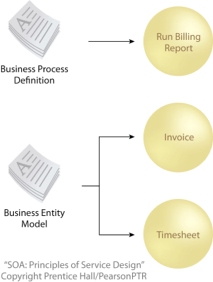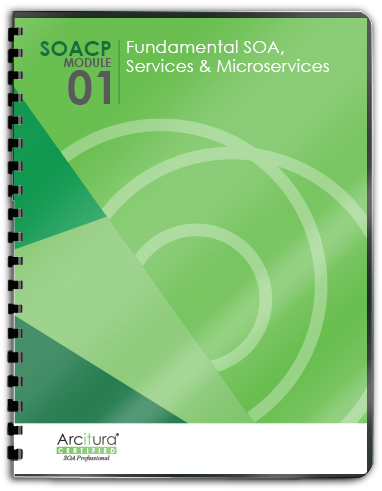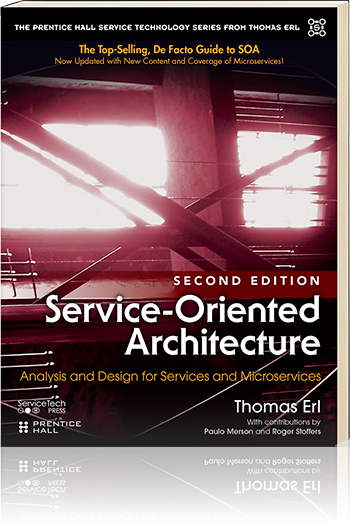SOA Patterns > Basics > What is SOA > Goals and Benefits of Service-Oriented Computing > Increased Vendor Diversification Options > Increased Business and Technology Alignment
Increased Business and Technology Alignment
The extent to which IT business requirements are fulfilled is often associated with the accuracy with which business logic is expressed and automated by solution logic. Because applications have traditionally been designed to address immediate or tactical requirements, there has historically been a challenge in keeping applications in alignment with business needs when the nature and direction of the business changes.
Service-oriented computing introduces a design paradigm that promotes abstraction on many levels. One of the most effective means by which functional abstraction is applied is the establishment of service layers that accurately encapsulate and represent business models. By doing so, common, pre-existing representations of business logic (business entities, business processes) can exist in implemented form as physical services.
This is accomplished by incorporating a structured analysis and modeling process that requires the hands-on involvement of business subject matter experts in the actual definition of the services (as explained on the Service-Oriented Analysis page). The resulting service designs are capable of aligning automation technology with business intelligence on an unprecedented level.

Figure 1 – Services with business-centric functional contexts are carefully modeled to express and encapsulate corresponding business models and logic.
Furthermore, the fact that services are designed to be intrinsically interoperable directly facilitates business change. As business processes are augmented in response to various factors (business climate changes, new competitors, new policies, new priorities, etc.) services can be reconfigured into new compositions that reflect the changed business logic. This allows a service-oriented technology architecture to evolve in tandem with the business itself.
| Related Service-Orientation Principles
Standardized Service Contract, Service Reusability, Service Autonomy, Service Discoverability, Service Composability |
| Related SOA Patterns
Agnostic Capability, Agnostic Context, Canonical Schema, Capability Recomposition, Entity Abstraction, Functional Decomposition, Non-Agnostic Context, Process Abstraction, Schema Centralization, Service Encapsulation, Service Layers |

